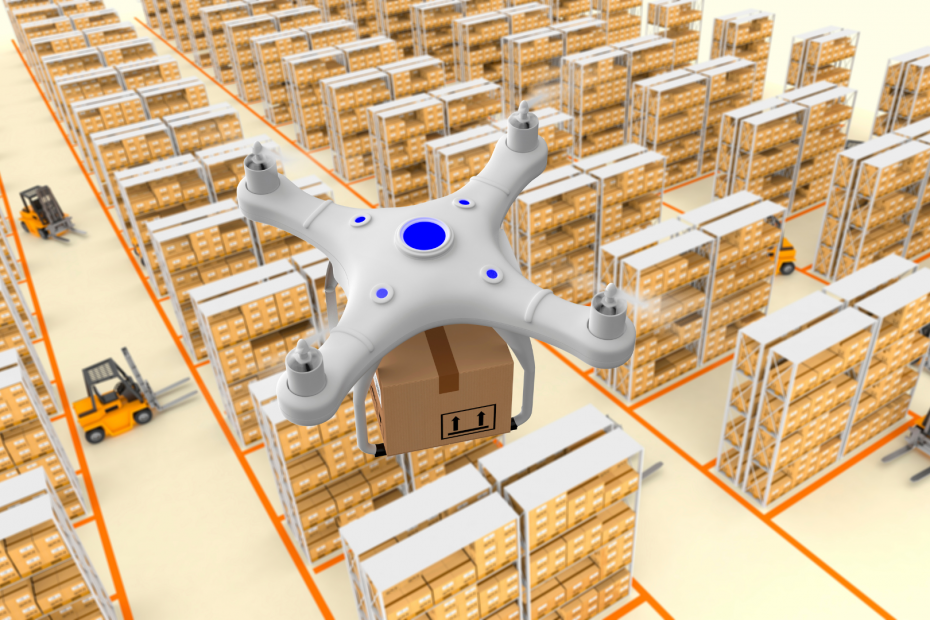With the help of advanced technologies, businesses have a lot of options when it comes to warehouse management systems. Rather than choosing a single type of automation solution, many businesses are choosing to implement multiple technologies to meet multiple business needs.
Instead of relying on a single technology solution, many of them utilize a combination of technologies and staff to optimize their warehouse efficiency. Warehouses are a crucial business component. They function as storage centers, processing centers, and distribution centers. In these roles, warehouses are tasked with keeping stock organized and available for processing or shipping.
Achieving this level of organization requires efficient warehouse design, using products and technologies that help them do their jobs better. Warehouse technology also affects the productivity and quality of work done in a warehouse, along with ensuring the safety of employees working on-site. Technological advancement in a warehouse can help them to track the implementation of all the safety guidelines as well as regularly do health and safety audits as well as keep stock of necessary working gear required in the workplace, including uniforms and gloves (check here to get information on such products). Tools and software in a warehouse can help the industry to automate a lot of processes, reducing overburden on the workforce.
Warehouses are an integral part of every business, whether big or small. This blog is all about the importance of knowing about warehouse technologies to increase efficiency.
Voice technology
Voice technology is one of the warehouse technologies to increase efficiency. This is a technological solution that employs voice recognition, speech synthesis, and natural language understanding techniques to convert spoken or written natural language into machine-encoded text and vice versa. It can recognize words, sentences, and paragraphs. Voice-driven technologies are changing warehouse management in many ways. It has become one of the most crucial warehouse technologies to optimize business operations. Voice technology is a practical and efficient way for a warehouse manager to communicate with employees, increase productivity, improve customer service, and reduce costs.
Robots and drones
Warehouses are one of the most dynamic and technologically driven industries. Advancements in the engineering and application of robotics and automation have led to continuous expansion in the warehouse industry. Warehouses these days are not simple ones anymore. By making use of the automation engineering services available to them, they are cost-efficient, efficient, and productive. Robots and drones are some of the technologies to increase efficiency. Robots are widely used for picking tasks in warehouses and always coming up with new solutions. They help increase accuracy as they avoid obstacles, move around shelves, and handle returns. The warehouse uses drones for deliveries. Drones are available in kits, ready to fly, or can be retrofitted with hardware. The drones can send real-time video to the warehouse.
Print-and-apply labeling
Printed labels are applied to products using a print-and-apply system after they are printed from a central server. As part of the business process automation software, a print-and-apply system prepare labels and affix them to various items. This warehouse technology increases efficiency in the labeling process; the labels can be printed as items move through the different stages of the warehouse, so products aren’t held up waiting for their turn to be labeled. Warehouses handling thousands of items will benefit from print-and-apply labeling, as it can speed up order fulfilment, which means customers receive their orders more quickly. Some warehouses also prefer printed Magnetic Warehouse Labels. These kinds of labels are designed for the heaviest, most work-intensive environments. A second advantage of magnetic printed labels is that they leave no mess when they are peeled off.
Big data
Big data refers to high-volume, high-variety information assets that require complex analytical processing. Descriptive, diagnostic, predictive, and prescriptive analytics are at the heart of big data. When combined, predictive analytics and rigid analytics drive value, improve operations and provide a strategic competitive advantage.
Internet of things
Internet of Things is one of the warehouse technologies to increase efficiency. What is the Internet of Things? IoT is the unique network of any physical device, vehicle, or home appliance, as well as items embedded with actuators, network connectivity, electronics, and sensors that enable these pieces to link and exchange data. With the increasing use of the Internet of things, businesses can reduce costs, increase productivity, and streamline their operations.
Improved warehouse design
The warehouse design is the backbone of the warehouse operation. If the warehouse design is not effective, it will create a significant negative impact on the overall operational efficiency of your warehouse. The warehouse design is so important that it can have a significant impact on productivity and efficiency if not done properly.
Cloud-based warehouse management systems
Warehouse management systems (WMS) is a systems used in warehousing, inventory management, and controlling the flow of goods within a warehouse or distribution center. For warehouse managers, these systems help with the coordination of the flow of goods in a warehouse and the quality of operations of a warehouse. The WMS system helps companies be more dynamic, competitive, and efficient by optimizing the supply chain in an organized manner.
Warehouses are hubs of activity for most companies. From storing finished products and shipping them to dispatching raw materials to store incoming inventory, warehouses are there to handle every task involved with getting products into the hands of consumers. And, as any warehouse manager knows, they are in constant motion, with employees constantly on the move and new products being introduced to customers every day. This constant movement requires warehouse managers to keep shipments moving as efficiently as possible.
